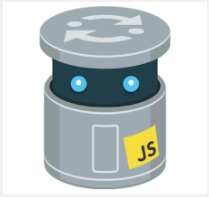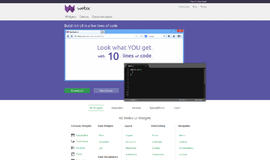5 New Mobile Application Monetization Strategies Developers Need To Take Advantage Of In 2016
For most developers, monetizing their mobile apps means putting it up on Google Play or iTunes. You make money either by selling it, through advertising, or through in-app purchases. The great thing about these strategies is that they’re tried and tested. If you have an awesome app or a great game and good marketing, it is possible to make a lot of money by monetizing mobile apps.
But the problem is, with all the paid and free apps available today, it’s actually harder now to sell apps than ever before. The Google Play Store has over 1.6 million apps. Apple’s App Store has over 1.5 million. With all that competition, it’s no wonder that almost 20% of all apps don’t generate any revenue and 51% of all the apps on the market today are making less than $500 per month on revenue.
Traditional techniques still work but to stand out, developers have to be more creative and integrate new monetization strategies. Let’s look at the 5 new strategies that developers can use to make more from mobile app development

1. Sales and Merchandising
I know, sales and merchandising isn’t really new but as an app monetization strategy it is starting to be adapted in different ways. Traditionally, we associated this strategy with ecommerce sites but it’s now also being used by non-ecommerce apps in really creative ways. How you ask?
If you have a really brilliant app and you're able to deliver a great pitch, one way to fund and make money with this technique is through donations and crowdfunding. By giving future users exclusive access or premium features they can’t get elsewhere, you’re engaging them and building a great community from the outset.
And if design is a major factor for your app, you can consider creating and selling branded merchandise. The branded merchandise can be part of the “gifts” you give to people in your crowdfunding campaign or sell them on their own. What makes this a really good strategy is the fact that the merchandise can also work as a promotional tool for the app or game. It can even work as another income vertical. A good example of this is Angry Birds. In addition to the sales from the app, they’re earning from royalties for the use of their designs, merchandise, cartoons and now a movie.
Last but not the least, you can use your app as a tool for affiliate marketing, which is perfect for review apps. The great thing about affiliate marketing is it allows you to earn a percentage of every sale made through your app. For the most part, you don’t need to do any hard selling or create ads that could affect user experience. However, this would mean you need to have a marketing funnel in place and content to convert and guide your users through that funnel.

2. App Promotion
Long before the app is even launched and available in stores, developers are now investing in app promotion strategies to help jumpstart monetization. Gone are the days when you can just publish and forget it, hoping that the app will gain followers organically and just go viral. Even before the launch, you need to have a website to build a list where people can sign up to beta test, use social media to slowly educate people on what your app is and what it can do, go to events to network and pitch your app, get the media involved if you have the connections, and sometimes even invest in guerilla marketing to get some attention.
By investing in app promotion long before your app is launched, you can build a base of users ready to help you test and refine your app, and even get some starting revenue before launching a more active marketing campaign to reach more users.

3. Auxiliary app development, localization and franchising
You don’t need to have a stand alone native app to make money. Developing auxiliary apps for commonly used applications for Facebook or Twitter is a great way to already tap into a large user base. Auxiliary apps like Facebook Games or Twitter Apps make money from in-app purchases, marketing research, and paid upgrades for premium features. You can even use auxiliary apps to funnel users to your own website or other apps, allowing you to have more marketing streams.
Most developers create apps with the international market in mind. But sometimes, creating localized apps first is a better monetization strategy. Localized apps allow developers to customize their marketing message to a more targeted market while opening up avenues for app franchising. The best case study for this strategy is AirBnB and Uber. AirBnB started in San Francisco, approaching locals and creating a local market. Once they had a working business model, they replicated this model in different places all over the world. They kept the international brand but localized content and pricing, making it affordable and approachable wherever they went.

4. Selling App Data or Source Code
If you already have an app or game you’re no longer interested in, selling your app’s IP or source code is a quick way to make money. You can also create multiple versions of your app’s source code (by introducing minor tweaks) and sell it off to other developers in marketplaces like Chupamobile.
Creating an API for your app is another great way to monetize app development. You can make it free for use to funnel users to your app, sell it to developers, or make it available on a subscription basis.

5. Mix and Match
Combining tried and tested strategies with new techniques is a great strategy because it allows developers to have multiple income streams from just one application. Facebook, for example, has marketing and an API. Popular mobile games like Clash of Clans have merchandising, in-app purchases and app promotion. Amazon does sales and merchandising but also offers affiliates and creates localized apps for different markets.
What’s the key in finding the best mix of monetization strategies? The best place to start is to look at the app and consider what it does. What problem does it solve? What can it do for the user? Your app’s purpose can usually lead you to the obvious strategies to use. If your application is focused on content, a subscription model is best. In-app purchases and upgrades are best suited for games and ecommerce. Freemium and direct payment is usually better suited for utility apps.
Looking at the competition and your target market is also a good way to figure out what other monetization strategies could work. Learn from the successes and mistakes of your competitor’s business plan. Look at what payment systems your target market is currently using and find ways to make it accessible. Is advertising working well for your direct competitors? And is your market willing to pay for an ad-free experience? If so, how much are they willing to shell out and how would they pay?
Conclusion:
Figuring out the best strategy is not easy but it’s very important. It’s not something you can afford to set aside and just figure out once your app becomes popular. With all the time, money and resources allotted in developing and marketing apps, you can’t afford not to have effective revenue streams. If you want to make money from mobile apps, you have to start thinking of how your applications can add value to your business. The sooner you find the right mix of monetization strategies and put them all in place, the sooner you can make money. And once everything runs systematically, you can replicate the system with each new product. The more revenue streams you have that run automatically, the more time and resources you'll have to allocate to what you do best, building better apps.
Recent Stories
Top DiscoverSDK Experts


Compare Products
Select up to three two products to compare by clicking on the compare icon () of each product.
{{compareToolModel.Error}}

















{{CommentsModel.TotalCount}} Comments
Your Comment